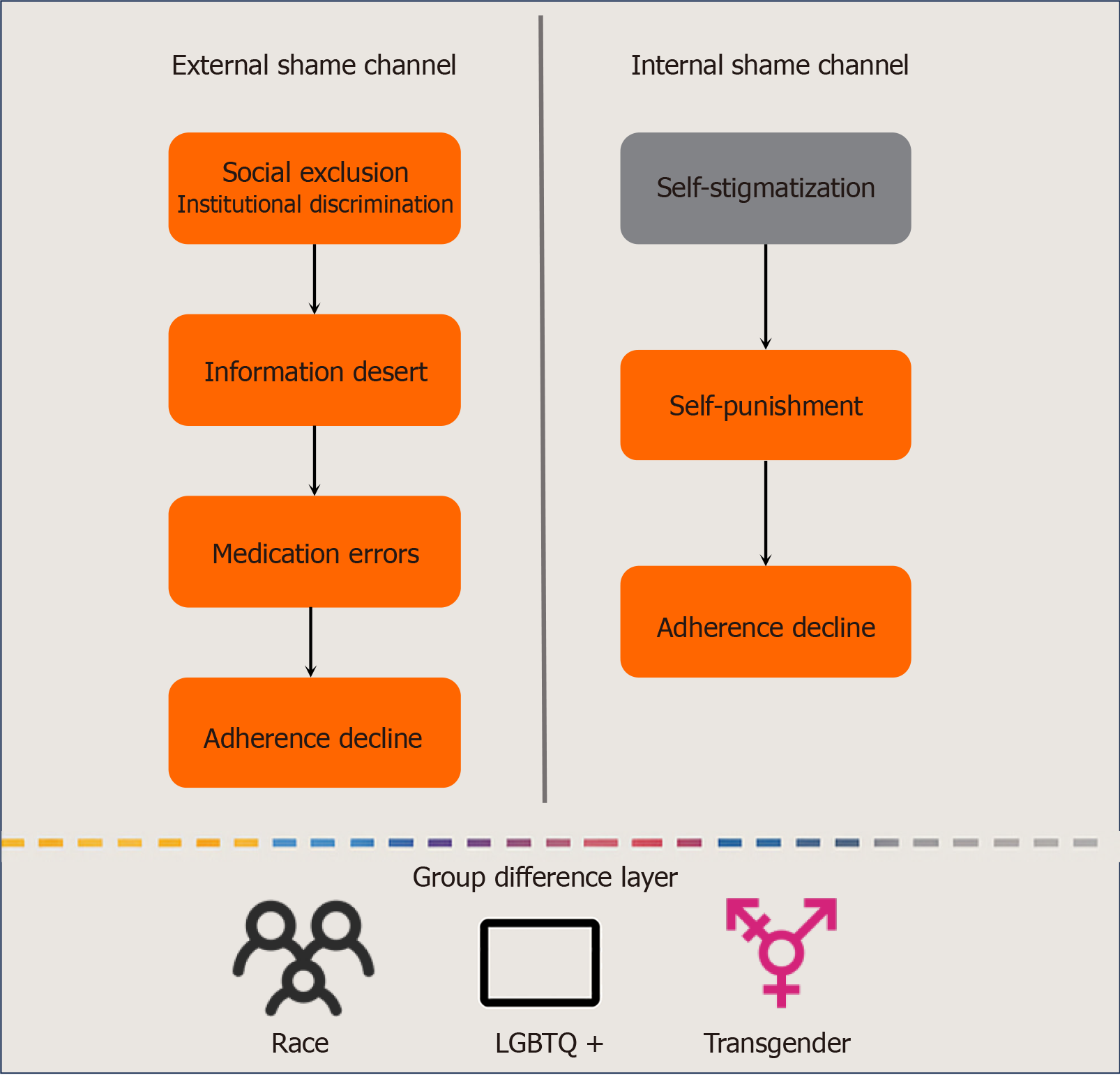Copyright
©The Author(s) 2025.
World J Psychiatry. Aug 19, 2025; 15(8): 107885
Published online Aug 19, 2025. doi: 10.5498/wjp.v15.i8.107885
Published online Aug 19, 2025. doi: 10.5498/wjp.v15.i8.107885
Figure 2 Dual-channel mechanisms of human immunodeficiency virus-related shame on treatment adherence.
Human immunodeficiency virus (HIV) related shame impairs treatment adherence through two complementary pathways: The external shame channel and the internal shame channel. The external shame channel follows a cascade in which social exclusion, reinforced by institutional discrimination, limits access to reliable health information, creating an information desert. This deficit increases the likelihood of medication errors, ultimately leading to adherence decline. Conversely, the internal shame channel reflects a self-directed mechanism, where self-stigmatization erodes treatment confidence, prompting self-punishment behaviors that further undermine adherence. Both pathways converge on adherence outcomes but are mediated by distinct psychosocial processes. At the foundation, the group difference layer highlights how intersecting identities-such as race, LGBTQ+ identity, and transgender status-amplify the effects of stigma through layered social disadvantages. These factors modulate the severity and progression of shame-related adherence barriers among people living with HIV. LGBTQ+: Lesbian, gay, bisexual, transgender, queer/questioning, plus.
- Citation: Xu CH, Hu D, Lin HJ, Yang YD, Li MN, Shao LW. Medication literacy and treatment adherence in people living with human immunodeficiency virus: Mediating effects of psychosocial factors. World J Psychiatry 2025; 15(8): 107885
- URL: https://www.wjgnet.com/2220-3206/full/v15/i8/107885.htm
- DOI: https://dx.doi.org/10.5498/wjp.v15.i8.107885









